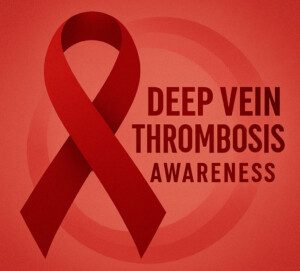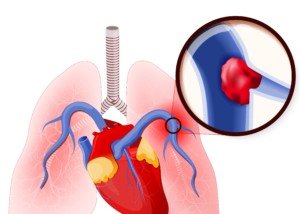
A woman dies at home from a pulmonary embolism after lying on the floor of her house for four days following arm surgery, having not recovered from the general anesthesia.
A DVT developed during immobility.
The woman developed a pulmonary embolism (which begins as a deep vein thrombosis or “DVT”) at some point while lying immobile for four days on her bathroom floor, after her husband placed her there because it was too difficult for him to drag her from the bed to the toilet.
The hospital had discharged her the day after arm surgery even though she was still in an anesthesia-induced stupor and could not converse, ambulate, eat or drink even water.
Could Aspirin Have Helped?
I asked an expert in the field if aspirin could have helped prevent a deep vein thrombosis (even though, since this woman was not able to hold down water, I wondered how her husband would have gotten aspirin inside her).
“There is no data, as far as I know, that aspirin can prevent or treat DVT in a post-op non-ambulatory patient,” says Seyed-Mojtaba Gashti, MD, a board certified vascular surgeon with Broward Health Medical Center in Florida.
I also wondered why the discharge instructions didn’t include giving this patient a more potent blood thinner, since the nurse knew that the patient was inert upon discharge.
Dr. Gashti, says, “Anticoagulation with coumadin and/or Lovenox (heparin) can be effective; but again I am not clear at all why this patient went home in the condition she was in.”
This story is the subject of a medical malpractice case, for which I had proofread one of its discovery deposition transcripts, and it’s a mystery to me as well, why a patient who’s not fully recovered from general anesthesia gets discharged.
There was obviously an adverse reaction to the general anesthesia, but she was sent home as though there were nothing wrong.
Well, there most certainly was. She lie immobile on the floor for four days; four days later she was dead from a pulmonary embolism, which begins as a DVT.
The DVT likely developed in her leg, but Dr. Gashti says, “You should also realize that we can also develop DVT in upper extremities as well which can then embolize.”
Upper extremity DVT involves blood clots that form in the veins of the arms, shoulders or neck.
Symptoms often include swelling in the affected arm or hand, pain or tenderness, and visible redness or warmth in the area.
Distension or protrusion of veins near the surface of the skin may also occur, making the condition noticeable.
Several factors can contribute to the development of upper extremity DVTs.
Prolonged immobility, trauma or injury to the arm or shoulder, and certain medical conditions that increase blood clotting, are common causes.
The presence of central venous catheters used for medical treatments can also elevate the risk.

Dr. Gashti specializes in the diagnosis and treatment of vascular disease including abdominal and aortic aneurysm.
 Lorra Garrick has been covering medical, fitness and cybersecurity topics for many years, having written thousands of articles for print magazines and websites, including as a ghostwriter. She’s also a former ACE-certified personal trainer.
Lorra Garrick has been covering medical, fitness and cybersecurity topics for many years, having written thousands of articles for print magazines and websites, including as a ghostwriter. She’s also a former ACE-certified personal trainer.
.









































